Diagnostic Unit
About
The GMI radiology department is equipped with two multislice CT scanners, two MRI scanners, a digital mammograph system, a bone mineral density scanner, two digital radiography systems, a digital radiography/fluoroscopy system and a multitude of ultrasound systems. This equipment, in conjunction with the personnel’s expertise, ensures exams with high diagnostic quality, minimal radiation exposure, without compromising patient comfort.
The department of diagnostic radiology is equipped with state-of-the-art medical equipment, capable of applying the latest and most advanced imaging techniques. Assessment of the examinations is supported by specialised software programs that integrate state-of-the-art technology in the fields of data processing and artificial intelligence (AI).
MRI Scanner
Magnetic Resonance Imaging (MRI) is a non-ionising diagnostic imaging method that visualises internal body structures using the principle of magnetic resonance. This technique delivers high-quality images, offering excellent contrast for soft tissues and other anatomical structures. In addition to anatomical insights, it also provides functional and quantitative information.
The MRI scanner is a cylindrical shaped machine open at both ends, in which a static magnetic field is developed. Through the application of radiofrequency waves and gradient fields, it enables the reception of signals via sensitive coils/antennas. These signals are then processed by specialised computers and converted into images.
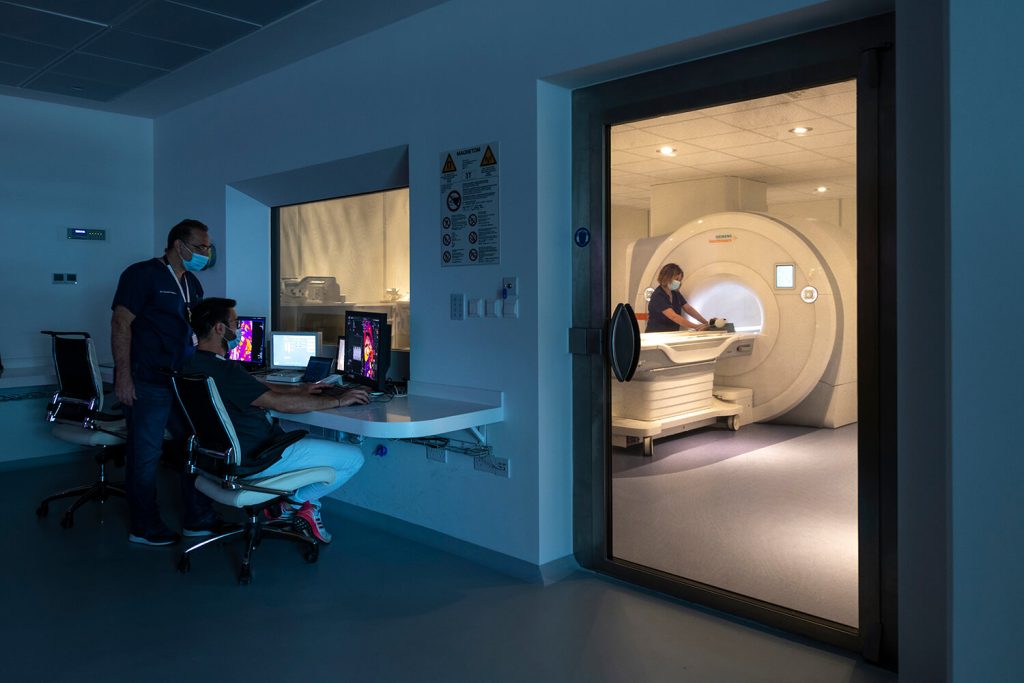
Basic Examinations
- Brain
- Internal Auditory Meatus
- Pituitary
- Orbits
- Neck Soft Tissue
- Chest
- Spinal Cord (cervical / thoracic / lumbar spine)
- Abdomen
- Pelvis
- Upper Extremities (Shoulder, Elbow, Wrist, Hand)
- Lower Extremities (Hip, Knee, Ankle, Foot)
- Spinal Marrow

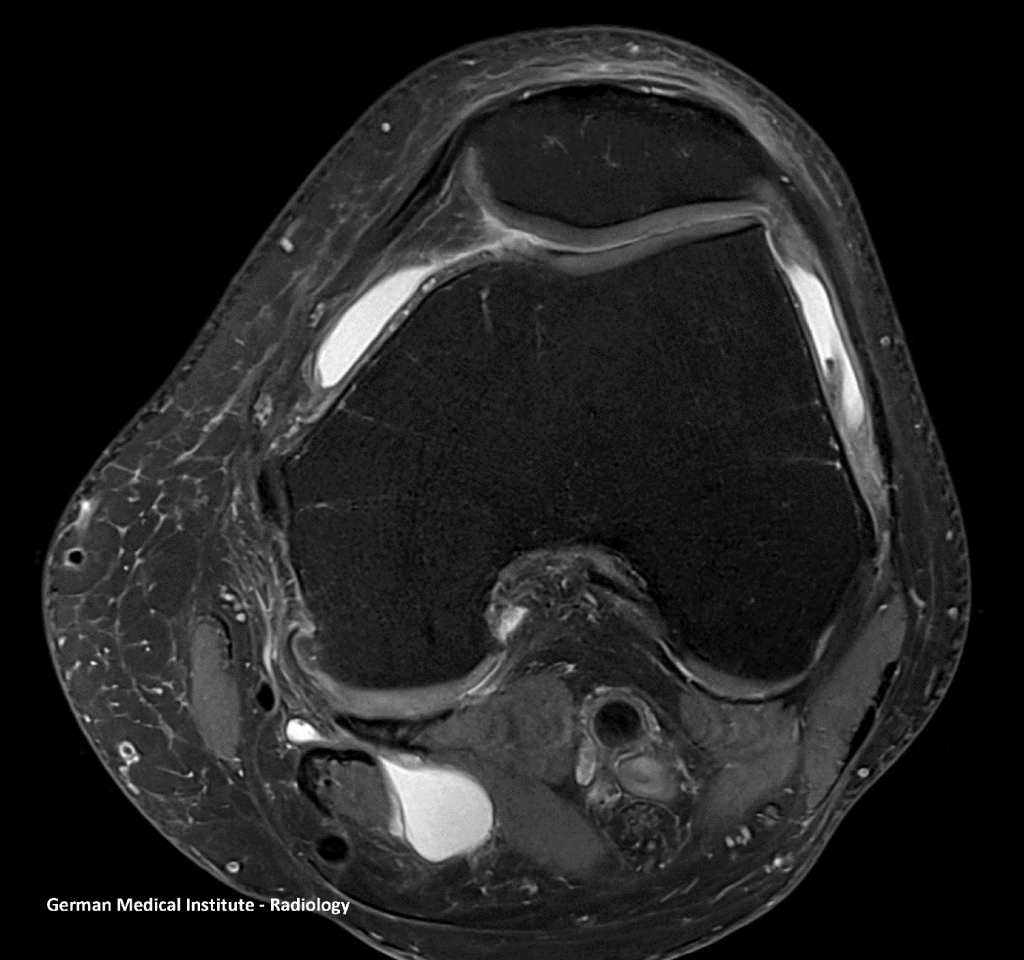
Angiography / Venography - (With or without the use of intravenous contrast agent)
- Brain
- Carotids
- Thoracic Aorta
- Thoracic Outlet Syndrome
- Abdominal Aorta
- Peripheral Angiography
- Black-Blood Angiography


Specialised Examinations
- Brain Spectroscopy
- Brain Perfusion
- Functional MRI (fMRI)
- Tractography
- CSF Flow
- Brachial plexus
- Breast MRI
- Cardiac MRI
- Myocardial Stress Perfusion
- Quantitative measurement of liver and myocardial iron overload
- Liver with hepatobiliary contrast agent
- Cholangiography
- Enterography
- Multiparametric Prostate MRI
- Arthrography (Hip, Shoulder, Elbow, Wrist, Foot)
- Urography
- Whole Body
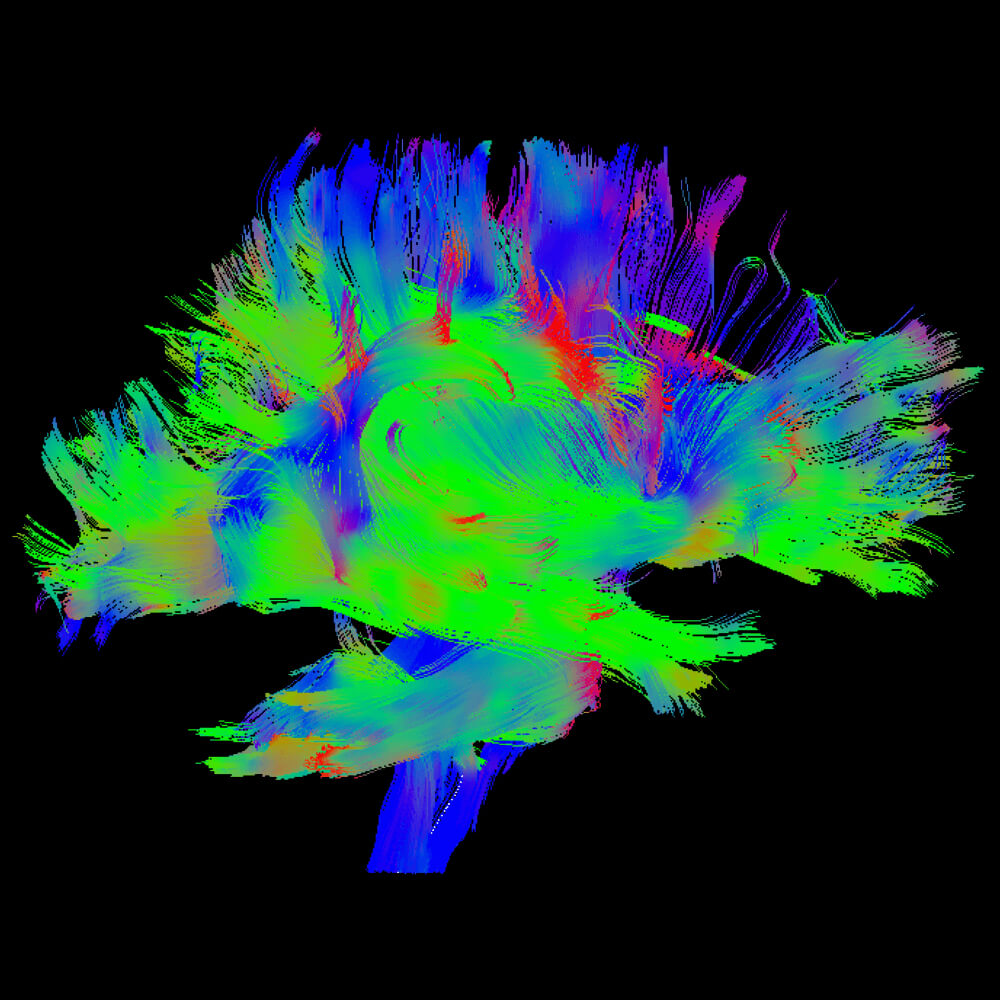
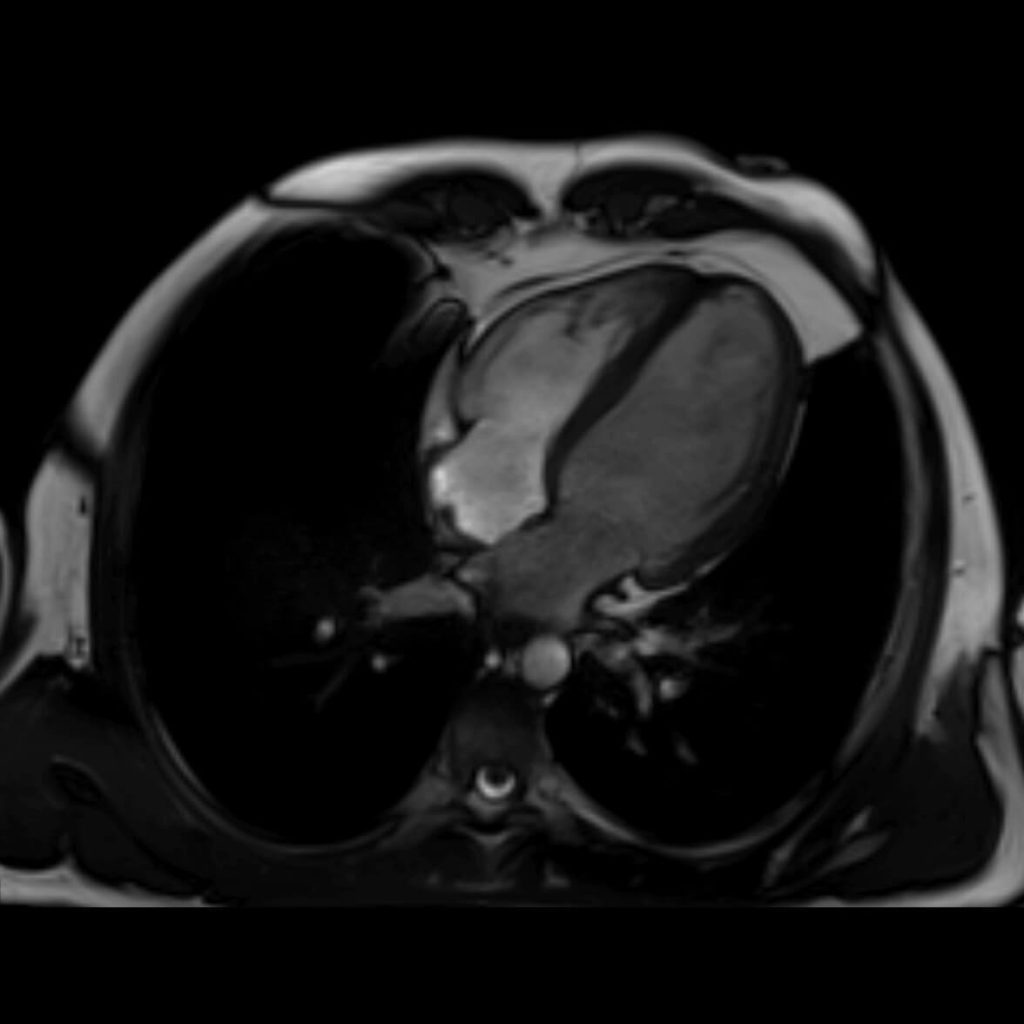
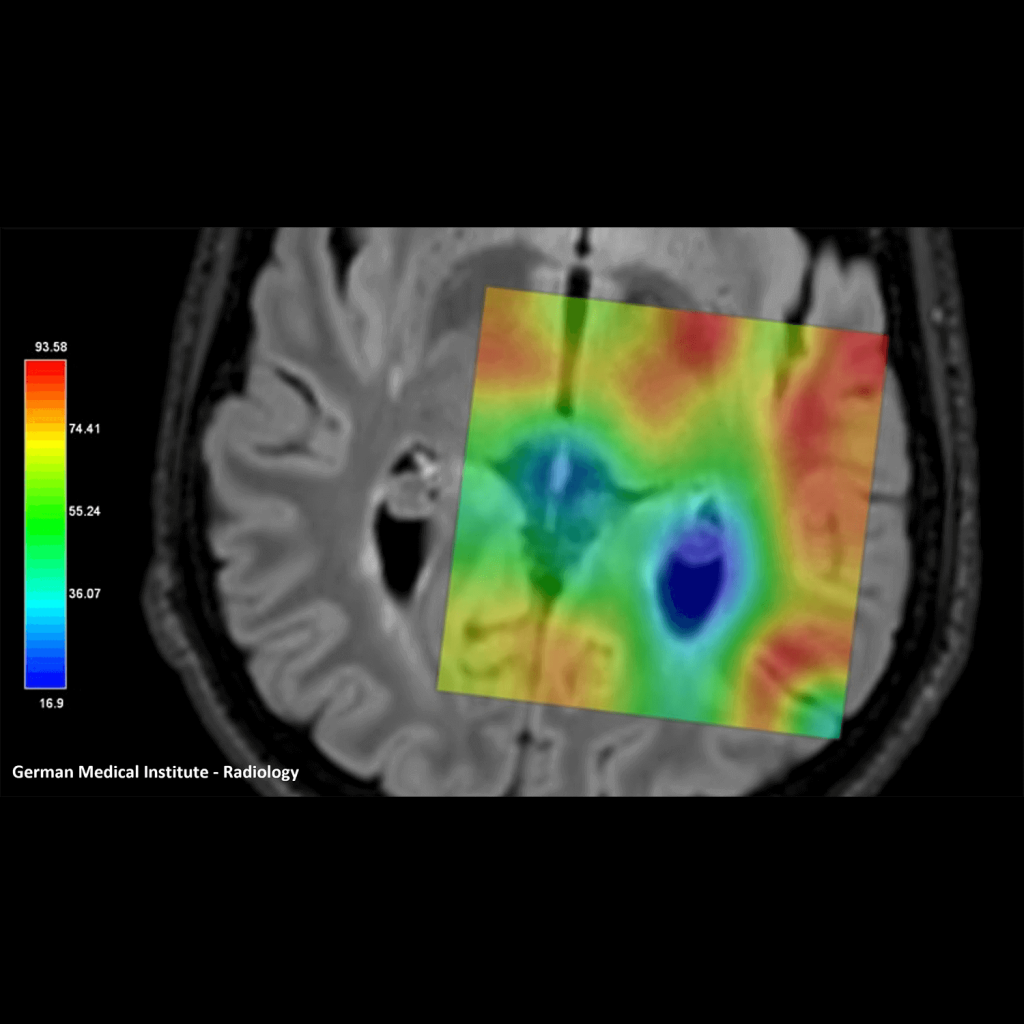
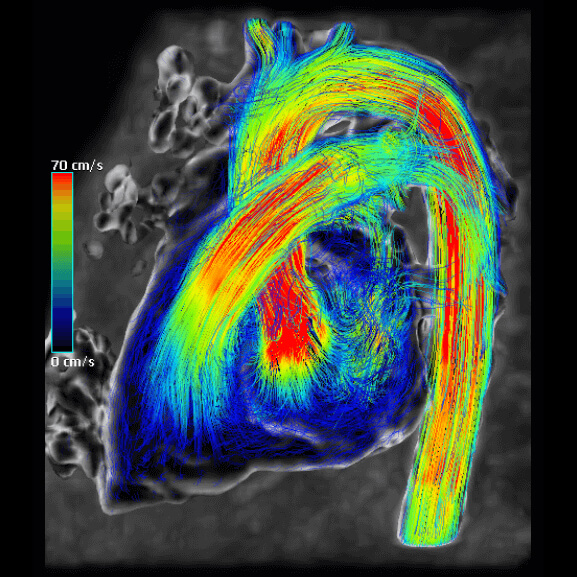
Preparing examinees for MRI scans
Most examinations do not require any special preparation on the examinees’ part, however, for safety and improved diagnostic quality, our centre has established principles regarding the preparation of the examinees.
- Examinees are kindly requested to arrive at the center 15 minutes before their scheduled appointment, wear light clothing and bring any previous examinations, preferably in a digital format, they may have from other medical centres.
- For individuals who experience claustrophobia, a sedative pill can be administered to assist the process. It is crucial for us to be informed of this request at the time of appointment scheduling. In such cases, examinees are required to arrive 45 minutes prior to their scheduled exam, and to be accompanied by an individual who will be responsible for their transportation from the centre.
- It is preferable that the examinee’s clothing not to include metallic objects, buttons, zippers, belts, hair clips, bras, etc.
- If the patient is pregnant or breastfeeding, they are required to inform the staff during the appointment scheduling to receive relevant instructions.
- In cases where the examinee has metal implants, such as surgical clips, aneurysm clips, neurostimulators, heart valves, cochlear implants, brain shunts, breast tissue expanders and so on, it is important to inform the centre’s personnel to assess their compatibility with the MRI scanner. A prerequisite is that the examinee provides official documentation specifying the type of implant.
- When the patient has a pacemaker, the examination can only be performed if the pacemaker is first appropriately adjusted by a medical cardiologist.
- If the examinee has any type of mobility difficulties or known allergies, these should be reported prior to scheduling the examination to ensure that appropriate instructions are provided.
- For exams involving the upper and/or lower abdomen, it is suggested to fast for at least 4 hours before the appointment.
- For MR Enterography, the examinee should arrive at the hospital 1 hour before their scheduled appointment to ensure the proper administration of the oral contrast solution.
- For more specialised MRI exams, detailed instructions are provided during the scheduling process.
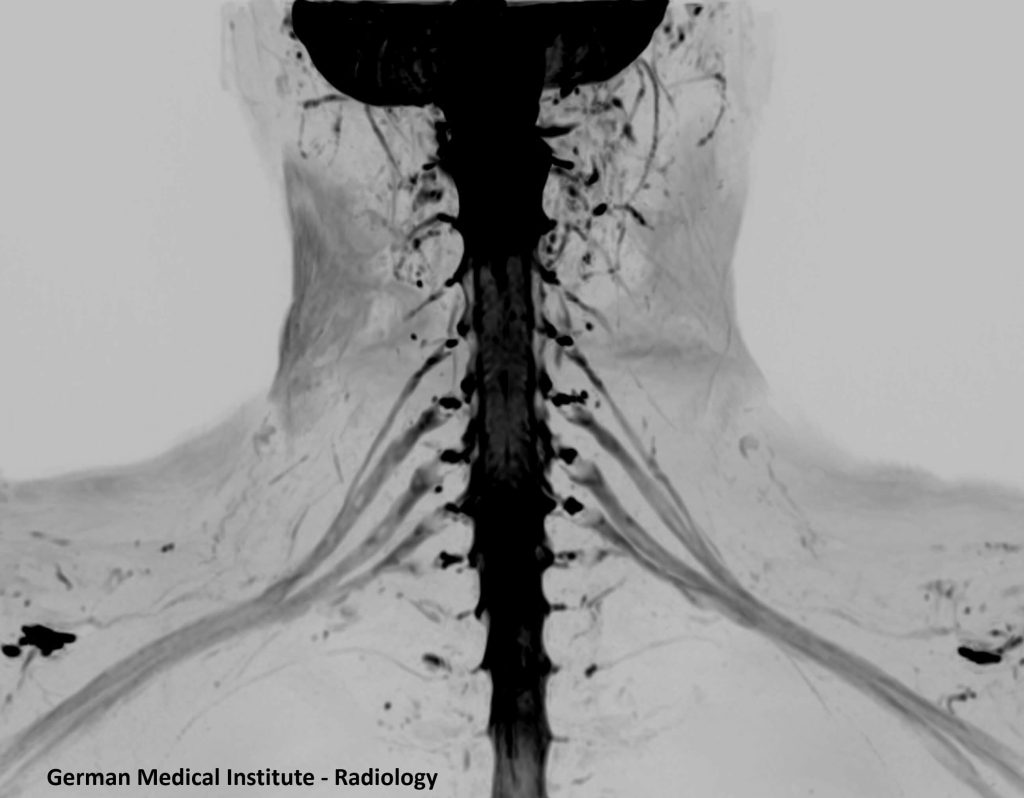
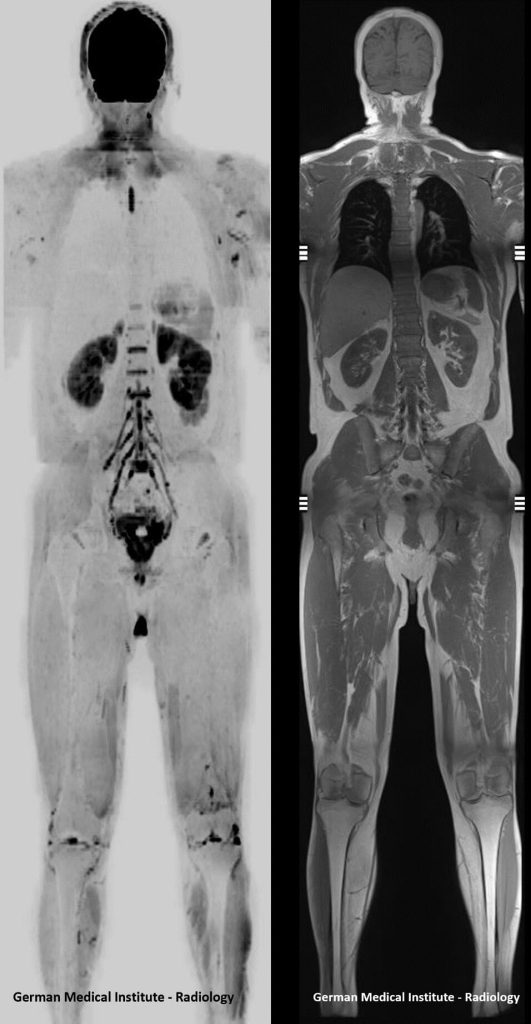
CT scanner
Computed Tomography (CT) is an imaging technique that relies on the production of X-rays from a housing tube, which pass through the body of the individual to be examined. Various tissues in the body absorb part of the energy of the incident photons and the attenuated X-ray beams are detected by an array of detectors. The information is then recorded by a computer system where it is converted into an image.
A CT scan can provide detailed information about any structure in the body, including the lungs, bones, soft tissue, the heart, and blood vessels. It can be used for the diagnosis and monitoring of various diseases and conditions.

Basic Examinations
- Brain
- Orbits
- Paranasal sinuses
- Visceral Bones
- Temporal Bones
- Neck
- Thorax
- Abdomen
- Pelvis
- Spinal Cord (cervical / thoracic / lumbar)
- Vertebral (musculoskeletal) System
- Upper and lower limbs
- Whole body
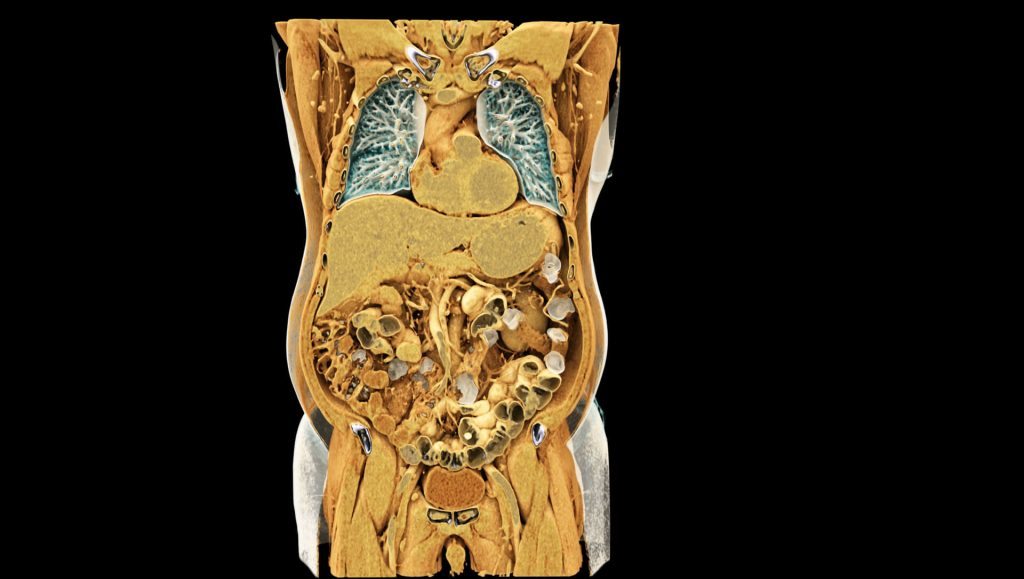
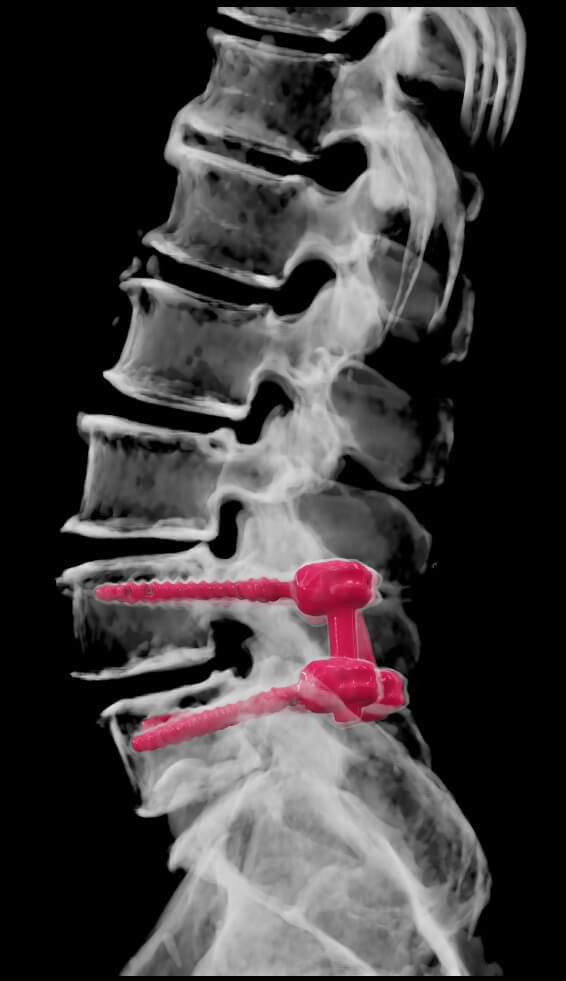
Angiography
- Brain
- Carotid
- Thoracic Aorta
- Abdominal Aorta / Visceral Vessels
- Peripheral vessels
- Pulmonary artery
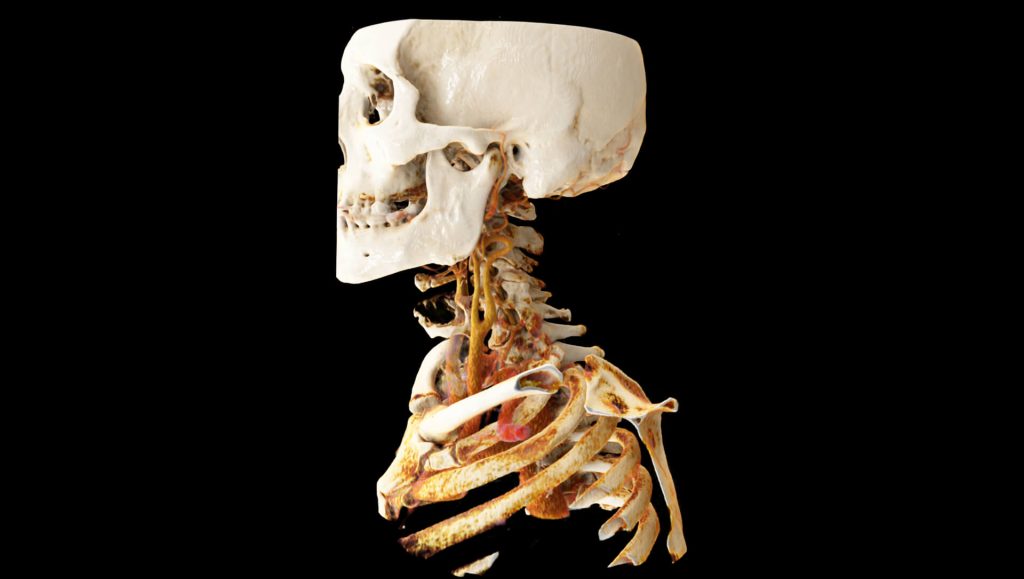
Specialised Examinations
- Mantible / Maxilla
- Urography
- Dual-energy urography (stone composition)
- Enterography
- Coronary angiography
- Virtual Colonoscopy
- Myocardial perfusion
- Brain perfusion
- Lung perfusion (dual energy)
- Bone marrow CT (dual energy)
- Gout detection (dual energy)
- Angiography of thoracic / abdominal aorta
and peripheral vessels (dual energy)
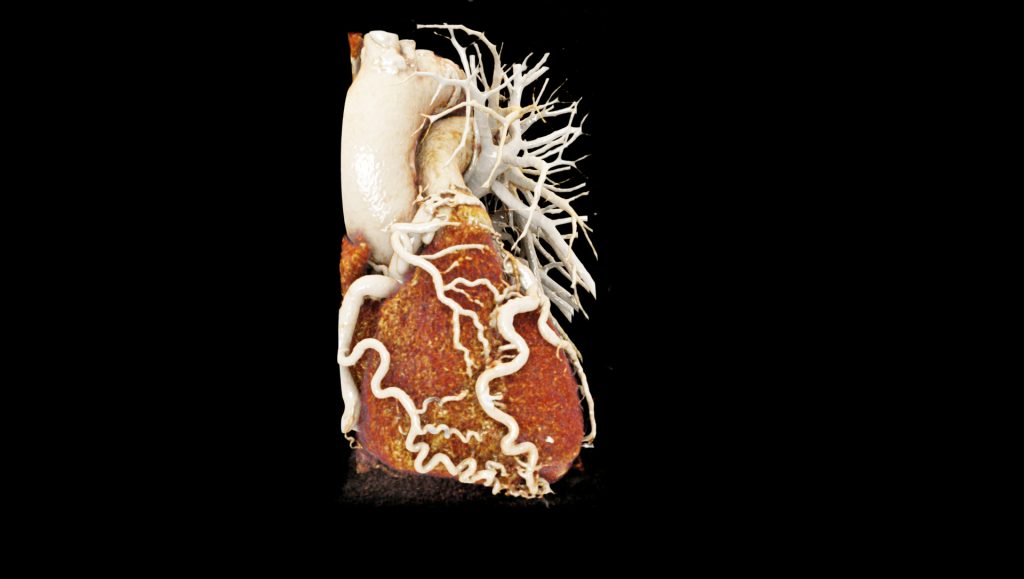
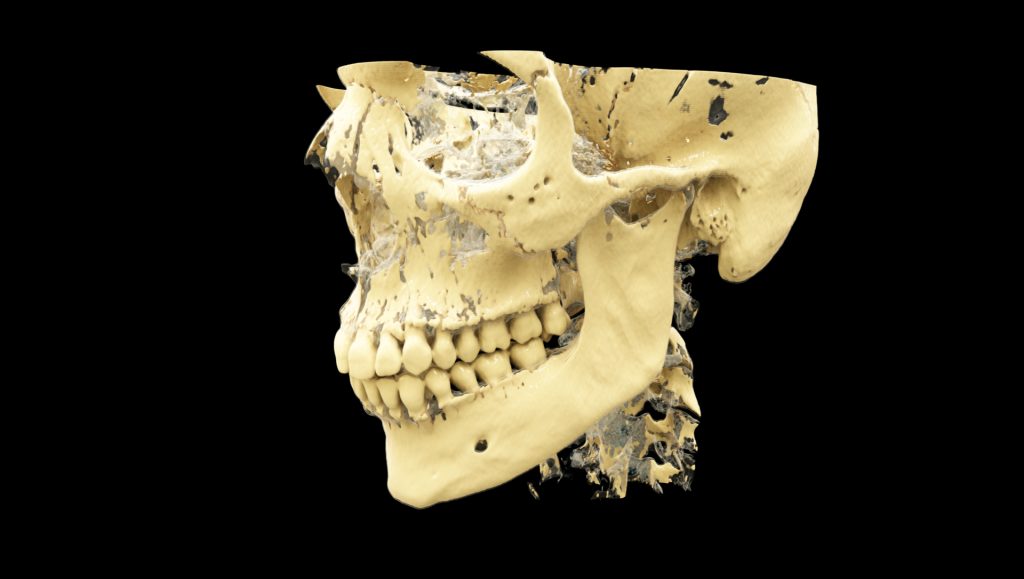

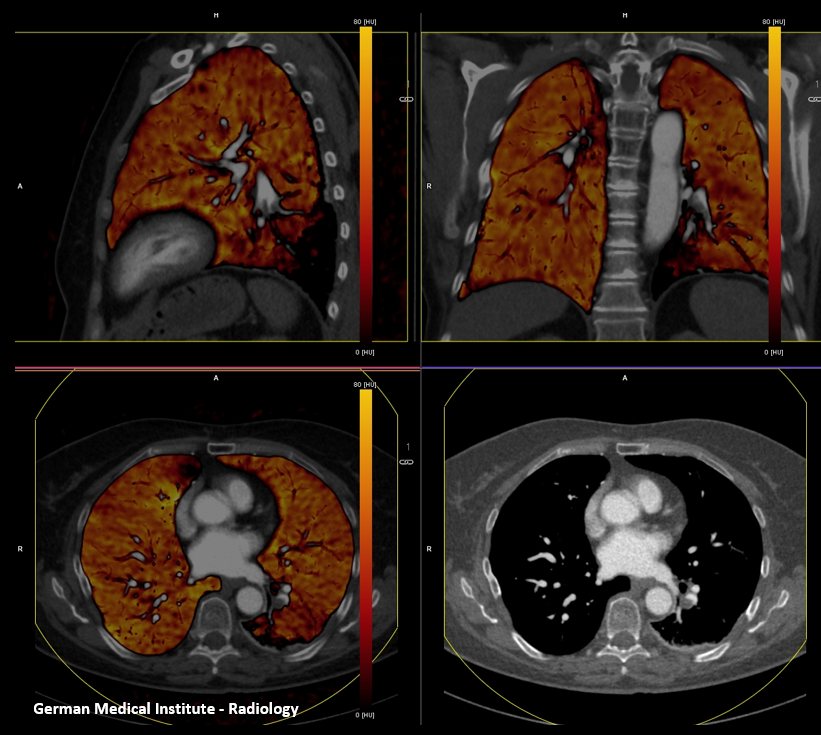
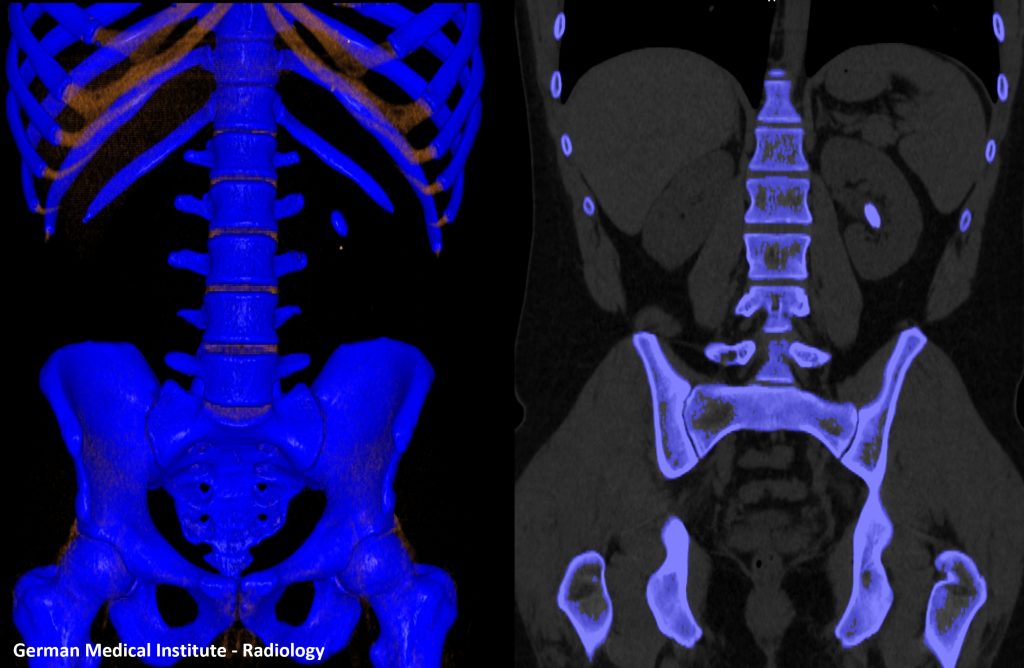
Preparing examinees for CT scans
- Examinees are kindly requested to arrive at the centre 15 minutes prior to their scheduled appointment. It is also recommended that they wear light clothing and bring any previous examinations, preferably in a digital format, that they have conducted outside our centre.
- For individuals who experience claustrophobia, a sedative pill can be administered to assist the process. It is crucial for us to be informed of this request at the time of appointment scheduling. In such cases, examinees are required to arrive 45 minutes prior to their scheduled exam, and to be accompanied by an individual who will be responsible for their transportation from the centre.
- It is preferable that the examinee’s clothing not to include metallic objects, buttons, zippers, belts, hair clips, bras, etc.
- If the patient is pregnant or breastfeeding, they are required to inform the staff during the appointment scheduling to receive relevant instructions.
- During the examination, an intravenous administration of a contrast medium may be deemed necessary to better visualise the area being scanned. All CT angiography (CTA) examinations involve administration of contrast medium and therefore patients will need to have recent creatinine level lab results before proceeding to the exam.
- If the examinee has known allergies or sensitivity to medications, they should contact the department’s administrative staff prior to the examination to receive special instructions and appropriate preparation.
- For exams involving the upper and/or lower abdomen, it is advisable to fast for at least 4 hours prior to the examination.
- If the exam is scheduled for the morning, it is preferable to follow a light diet the evening before the examination.
- For most examinations involving the upper and/or lower abdomen, the examinee will be required to take an oral contrast agent (gastrographin) to enhance bowel visualisation. The gastrographin can be obtained from the two reception areas of the radiology department, no earlier than 3 days prior to the exam. Pick-up hours are from 7:30am to 7:30pm on weekdays and from 8:00am to 12:00pm on Saturdays. If the examinee does not receive the gastrographin at home, they must arrive two hours prior to the scheduled appointment.
- Instructions for taking the gastrographin will be provided at pick-up and are as follows: Dilute 30 ml of gastrographin in 1.5 litres of water. The individual should consume a glass of this solution every 15 minutes, starting 2 hours before their scheduled appointment. It is advisable that the examinee refrains from evacuating in the last 30 minutes before CT examination.
- For CT enterography examinations, the examinee should arrive at the hospital 1 hour prior to their scheduled appointment to ensure proper intake of the oral solution.
- Following the examination, the examinee can immediately return to their normal daily activities. In cases where a contrast medium is administered, increased fluid intake throughout the day is recommended to aid in the elimination of the contrast medium from the body.
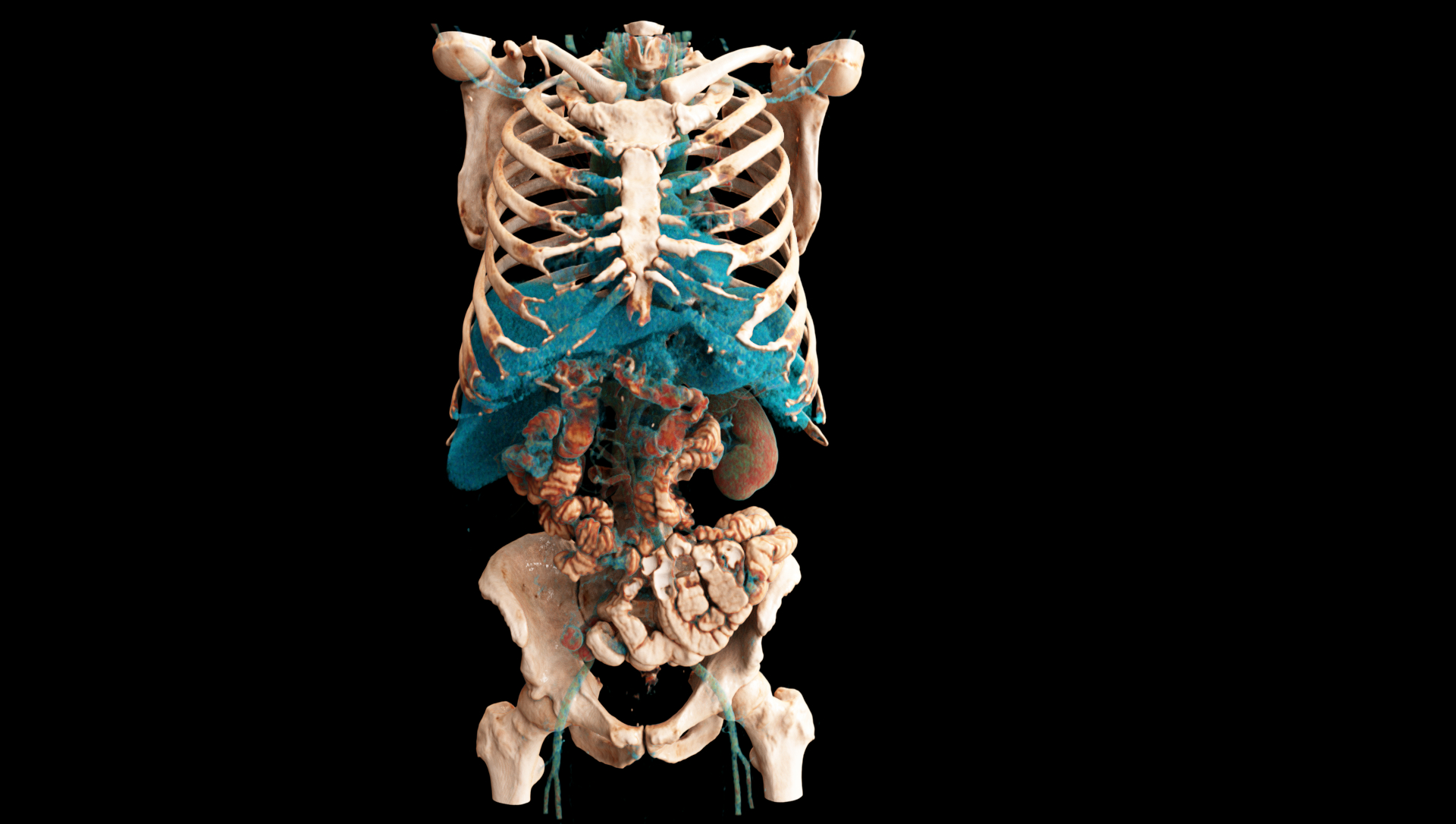
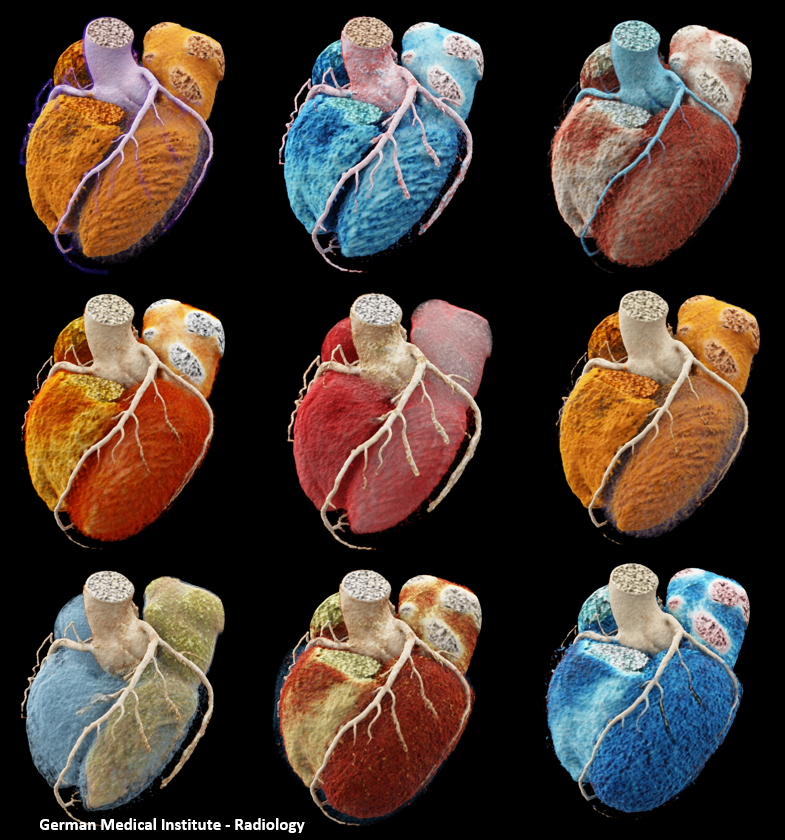
Digital mammography
Mammography is a painless radiological examination used for the prevention and diagnosis of breast cancer. Our centre is equipped with a cutting-edge Digital Mammograph that offers high spatial resolution and 3D imaging tomosynthesis. This allows for the detection of both palpable and non-palpable breast abnormalities and lesions, often way before any clinical signs develop. The use of low-energy X-rays ensures that radiation exposure remains minimal.
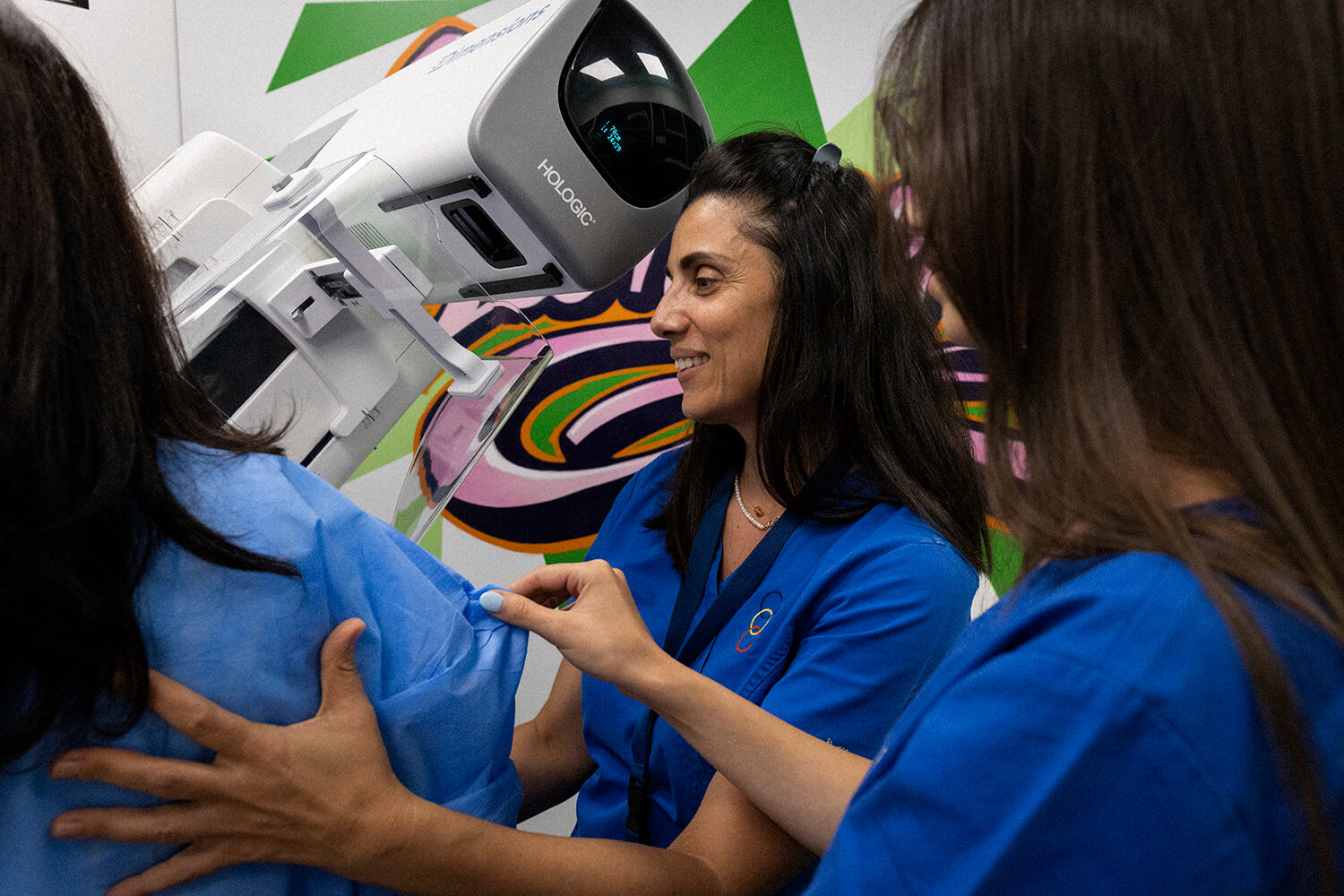
Basic exams for screening and/or diagnosis
- Digital mammography with two-dimensional imaging (2D)
- Digital tomosynthesis with 3D imaging (3D)
- Magnification views
- Supplementary mammography views
The exam procedure is relatively brief and carried out by specialist breast radiologists and radiographers. The examination takes place in a comfortable environment, and the space has been specifically designed to provide a sense of safety and tranquillity.
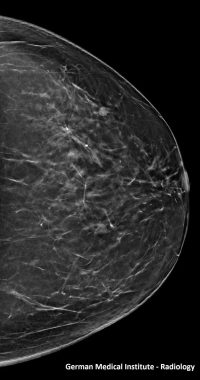
Bone Mineral Density
Bone mineral density measurement is a widely used, brief and painless examination that can diagnose the presence of osteoporosis in its early stages, before the appearance of clinical symptoms. It is conducted using dual-energy photon beams with a very low radiation dose, even lower than the daily radiation dose a person inadvertently receives from the environment. The method can be applied to various anatomical sites such as:
- Lumbar spine
- Hip
- Forearm
- Whole body
The procedure is notably uncomplicated, as the individual lies beneath the scanner, which moves along the body, effectively capturing images of the specific area of interest. The examination takes place in a pleasant and tastefully designed environment and the scanning process is completed under 2 minutes.


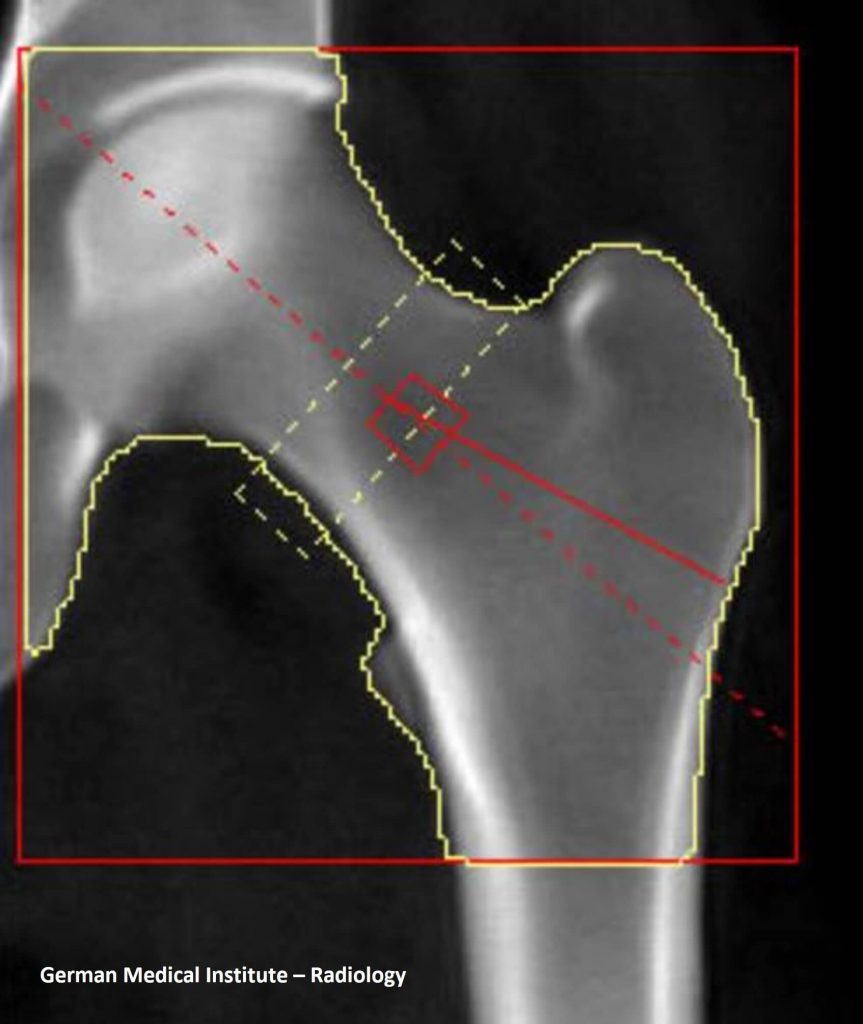
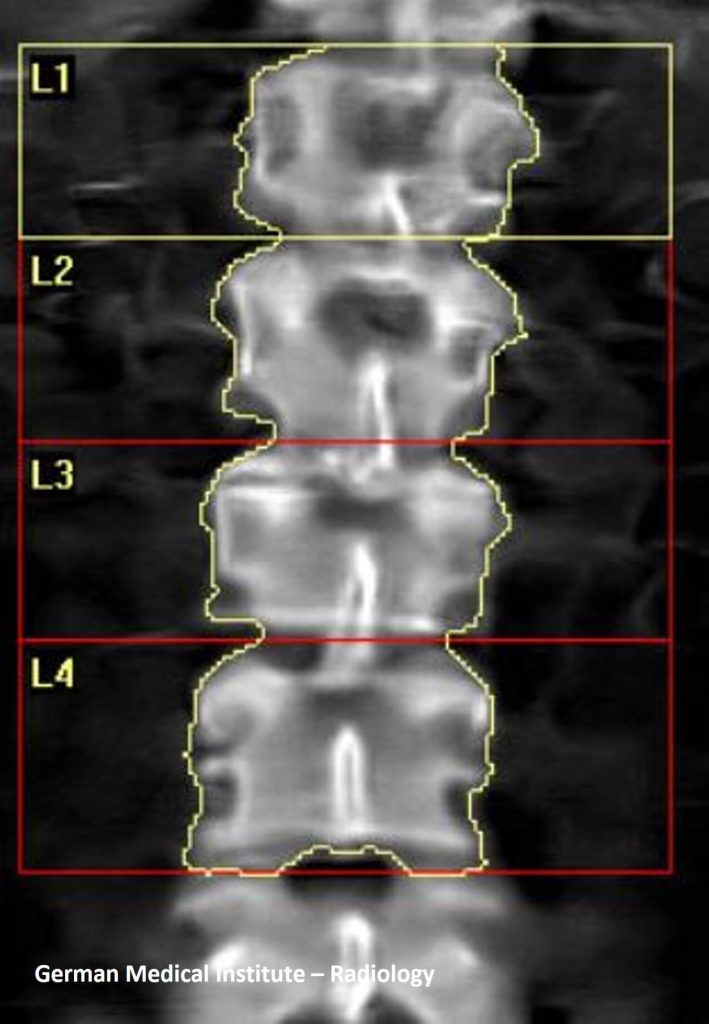
Digital Radiography
Digital radiography represents the evolution of conventional film-based radiography, and often serves as the initial diagnostic or screening method for various health issues. Due to easy accessibility, simplicity of the procedure and short examination time, it stands as one of the most common and effective diagnostic examinations. The department is equipped with state-of-the-art digital X-ray equipment.
The following X-rays exams are performed in our centre:
- Skull
- Chest
- Spinal Cord (cervical/thoracic/lumbar)
- Abdomen
- Pelvis
- Joints (Knee, Shoulder, Hip, Elbow, Ankle, Foot)
- Bones
The examination is carried out in specially designed facilities by qualified medical radiologists and radiographers.

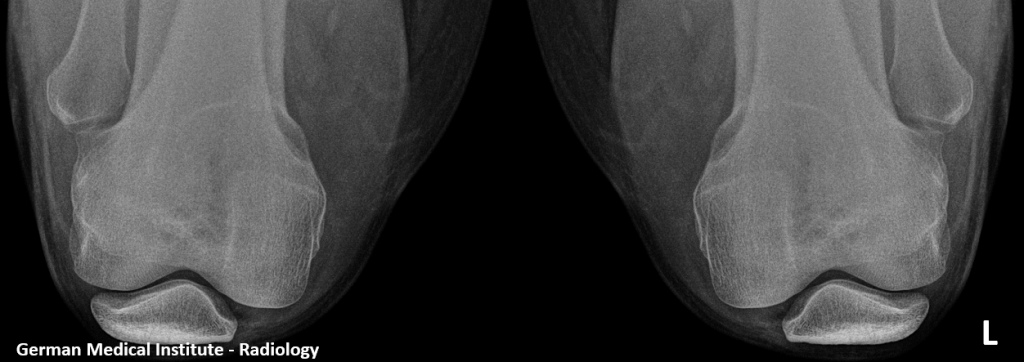
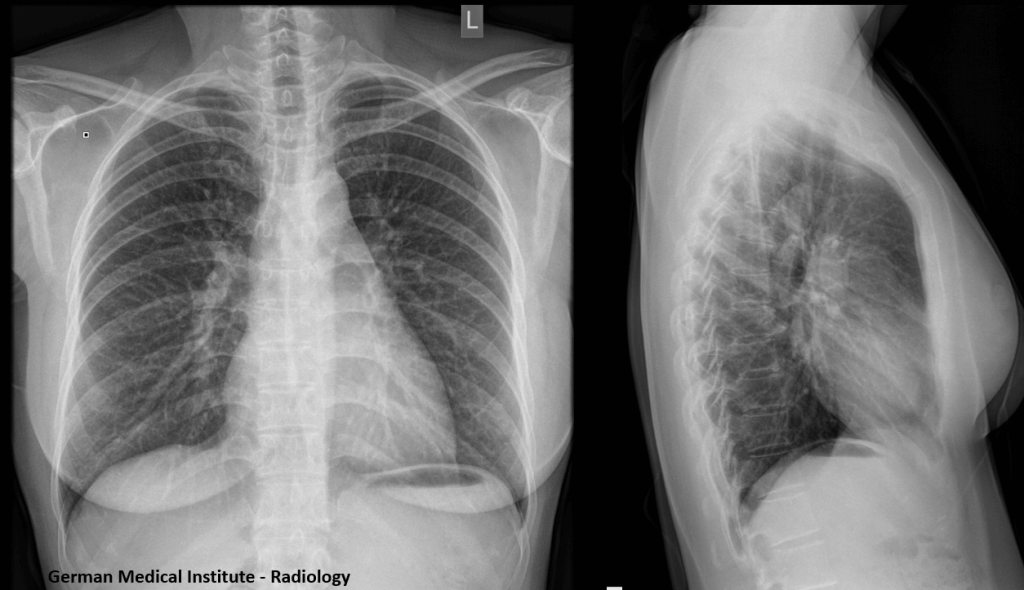
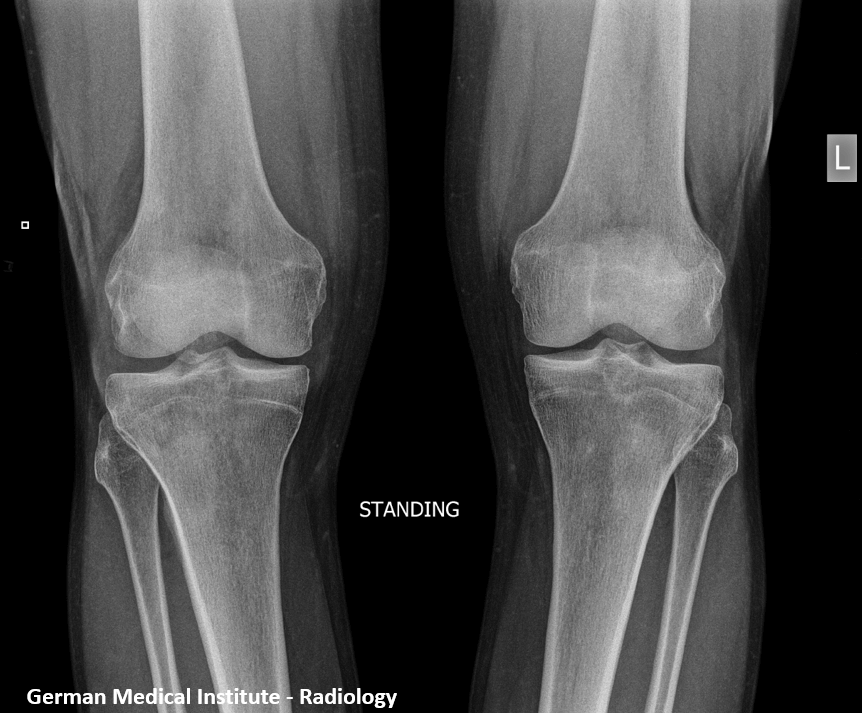
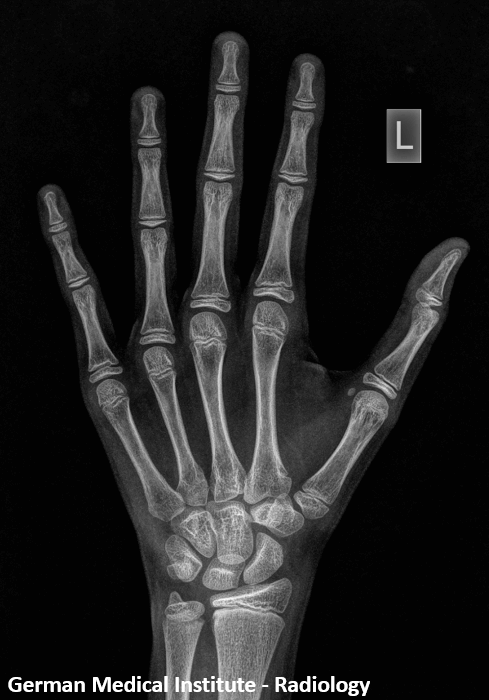
Ultrasound
Ultrasound is a painless, non-ionising examination that enables imaging of various anatomical regions, either as a simple routine check-up or for the diagnosis and monitoring of many pathologies. It is widely applied in modern medicine across various specialities. In addition to conventional examinations, our centre also offers Triplex ultrasound services, an examination that combines information from conventional ultrasound imaging of a vessel and Doppler flow examination information within the vessel.
The department has a multitude of modern ultrasound machines equipped with ultrasound transducers of various types to cover all types of examinations and anatomical areas, including:
- Carotid and Vertebral Artery Triplex
- Triplex of Abdominal aorta – Iliac arteries
- Triplex of Renal Arteries
- Triplex Veins and Arteries of the upper and lower limbs
- Portosplenic confluence Triplex
- Abdomen and pelvis
- Thyroid-Neck
- Soft tissues
- Kidney-Urinary Bladder-Prostate
- Breast
- Scrotum
- Elastography (liver, breast, thyroid, soft tissue)
- 3D Automated Breast Ultrasound (ABVS)
The examinations are carried out in specially designed rooms by qualified medical radiologists.
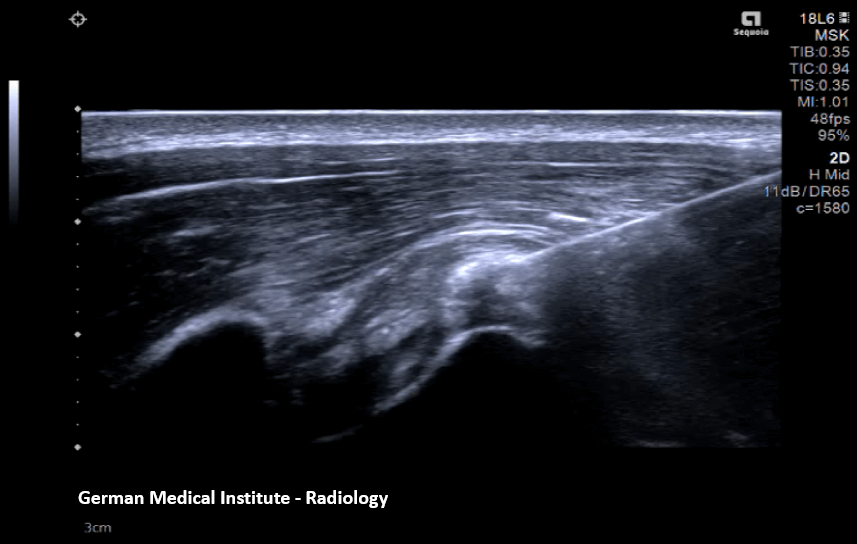
Preparing examinees for Ultrasound examinations:
Ultrasound examinations are, for the most part simple, easy, quick, and painless, however, it is worth noting specific preparation may be required for certain examinations.
- Examinees are kindly requested to arrive at the centre 15 minutes prior to their scheduled exam. It is recommended that they wear light clothing and provide any previous examinations, preferably in a digital format, conducted outside our centre.
- Abdomen-Liver Elastography: It is recommended that the examinee fasts for 6 hours prior to the exam. It is advisable to avoid consuming dairy products, salads, legumes, and eggs the previous day. Examinees may however have pasta, rice, potatoes, fish, and meat. Before the appointment, examinees can drink water, but are requested to refrain from coffee and milk.
- Pelvis ultrasound (urinary tract and genital organs): Up to one hour before the examination, the examinee must have consumed 4-5 glasses of water, with the purpose of having a strong urge to urinate during the examination.
- Abdomen-Pelvis Ultrasound: Please follow both of the above instructions.
- If the examinee is taking medication that can be taken without prior food intake, they may take this normally as it does not affect the diagnostic exam.



